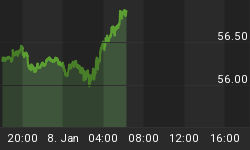To highlight more of the damage to be done to TARP recipient banks such as Wells Fargo and PNC, I know turn my attention to the commercial mortgage sector (see the previous post BoomBustBloggers appear to be pressuring PNC for background info). We have already hashed out risk in the residential mortgage sector with valuable research that I released for free: see The Re-Release of the Open Source Mortgage Default Model and Green Shoots are Being Fertilized by Brown Turds in the Mortgage Markets for our in depth take on loan losses to come for all banks who participated in residential real estate lending. I have visited commercial lending risk many times before, starting with my work on GGP, which is now bankrupt, but not before I gave my readers a warning nearly a year in advance See my posts from 2007 and early 2008:
- Will the commercial real estate market fall? Of course it will.
- Do you remember when I said Commercial Real Estate was sure to fall?
- The Commercial Real Estate Crash Cometh, and I know who is leading the way!
Now that the nation's second largest mall property owner and REIT has just filed chapter 11, after I warned readers over a year and a half ago of this very distinct possibility, others are finally starting to jump on the bandwagon (See General Growth Files for Protection in Biggest U.S. Real Estate Bankruptcy then go on to read the 80 or so pages of research that I have generated to support riding the share price down from $60 to near zero: GGP and the type of investigative analysis you will not get from your brokerage house.)
You may read more about what is happening in CRE lending in A Micro View of the Macro Damage to be Caused by Imploding Commercial Real Estate, but for now, I want to drill down to what these banks are holding.
Notice the exceptional timing of PNC management.

Commercial real estate values in the U.S. remained on an upward trend long after the 2nd half of 2006, when the housing prices began falling in most MSAs. Commercial real estate values peaked and began falling towards the end of 2007 and continued to decline through 2008.

These are our very conservative expected losses for PNC's CRE holdings, as compared to the government's stress test green shoots...

Trust me, it can get much worse. Take a look at Real Point Consulting's CMBS loss data, keeping in mind that the losses shown in CMBS are also cracking in the whole loans held at regional banks. CMBS delinquency rates are up 585%, year over year. REPEAT, 585%! For those who want to know why, I suggest you peruse "Who are ya gonna believe, the pundits or your lying eyes?"and Who are you going to believe, the pundits or your lying eyes, part 2. Here, a picture is worth a thousand words...

There ain't nuthin like building thousands of extra condo units next to empty condo to be lots, as condo prices plunge amid a glut of condo supply - all funded by banks like PNC!

Oh yeah, and back to the Real Point analytics:
In June 2009, the delinquent unpaid balance for CMBS increased by a substantial $9.87 billion, up to a trailing 12-month high of $28.65 billion. Overall, the delinquent unpaid balance grew for the 10th straight month, up an astounding 585% from one-year ago (when only $4.18 billion of delinquent balance was reported for June 2008), and is now almost 13 times the low point of $2.21 billion in March 2007. An increase in four of the five delinquent loan categories was noted in June, including a significant $6.82 billion increase in the 30-day delinquency bucket. Nearly one-half of this increase was driven by the reporting of $3.38 billion of GGP-sponsored but specially-serviced loans as 30-days delinquent (the ultimate resolution of such loans to be determined). In addition, the distressed 90+-day, Foreclosure and REO categories grew in aggregate for the 19th straight month - up 32% from the previous month and over 411% in the past year. This increase far overshadows the $104.6 million in loan workouts and liquidations reported for June 2009 across 26 loans. Ten of these loans at $58.06 million, however, experienced a loss severity near or below 1%, most likely related to workout fees, while the other 16 loans at $46.66 million experienced an average loss severity near 64%. As additional pressures are placed on special servicers to maximize returns in today's credit market, true loss severities are expected to be high while liquidation activity is expected to slow as fewer transactions occur. This would be the result of reduced or distressed asset pricing, lower availability of take-out financing, and increased extensions of balloon defaults through 2009 and 2010.
The total unpaid balance for all CMBS pools under review by Realpoint was $817.4 billion in June 2009, down from $825.4 billion in May (affected by some servicer and trustee reporting delays). Both the delinquent unpaid balance and delinquency percentage over the trailing twelve months are shown in Charts 1 and 2 below, clearly trending upward. (PS, that giant red stalk is a green shoot!)

The "lite" version of the "real" PNC stress test conducted in May by my staff and I is now available for public download. Notice how prescient it is now, and then, in light of PNC's recent earnings announcement - PNC profit down 87 pct, misses view on bad loans 23 Jul 2009.
PNC stress test write up - public lite 2009-07-27 02:37:11 193.21 Kb
Click here to subscribe to my research and opinion.
















